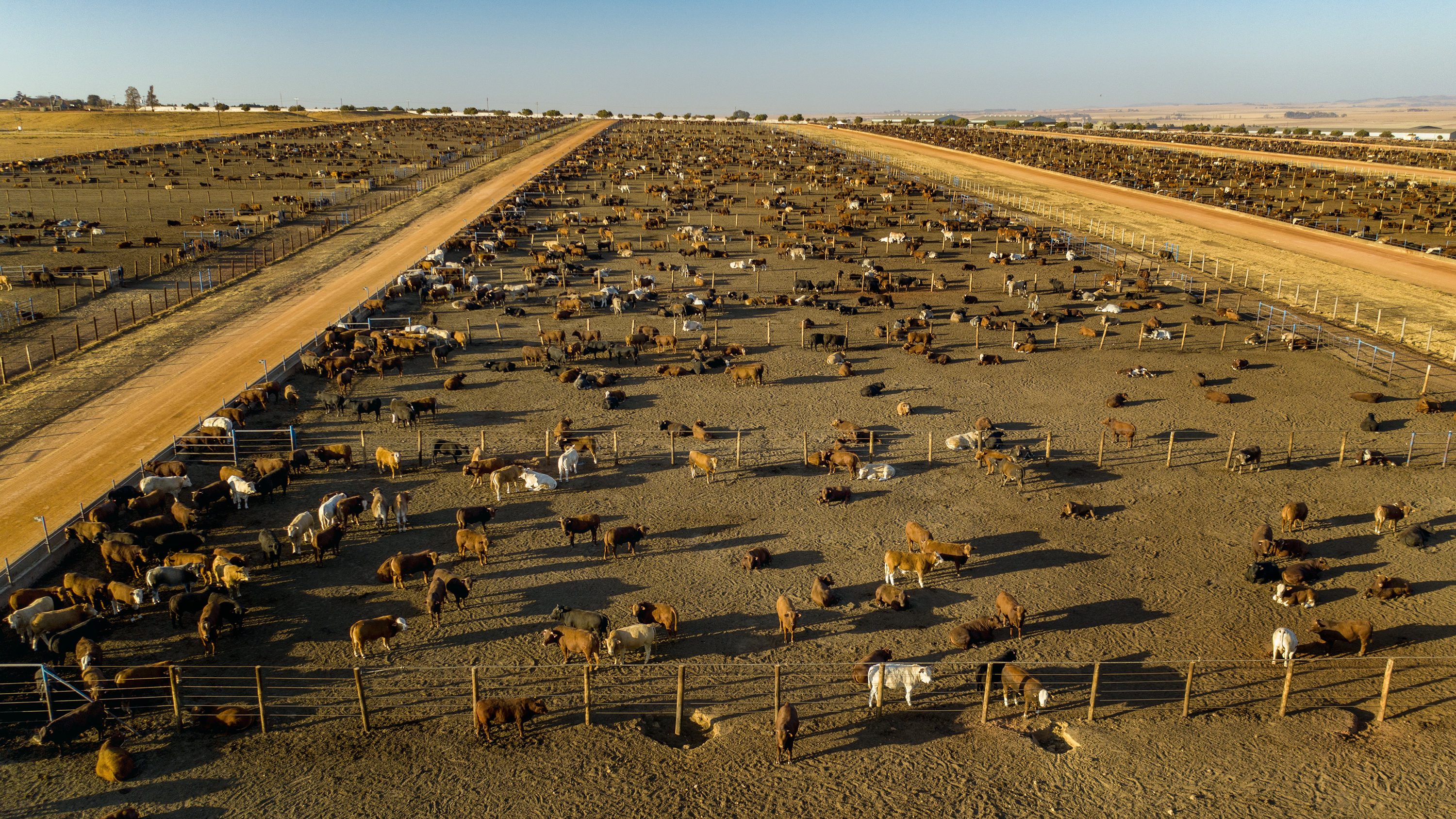Pulling methane out of the atmosphere could slow global warming—if we can figure out how to do it
Methane removal technology is unproven and would need to scale up quickly to prevent the worst impacts of climate change.

Pulling methane out of the atmosphere has the potential to help slow global warming in the next few decades—but researchers are still trying to figure out if it’s really feasible.
Methane is a powerful greenhouse gas, and human activities like natural-gas extraction and agriculture have more than doubled its concentration since the preindustrial era. Removing some methane from the atmosphere, or stopping it from being emitted in the first place, won’t stop climate change on its own, but methane removal could play a role in preventing the worst effects of warming this century.
“There’s probably nothing we could do that has a bigger effect on shaving peak temperatures over the next few decades than removing methane,” says Rob Jackson, a researcher at Stanford and a coauthor of both studies.
Methane is relatively scarce: carbon dioxide is about 200 times more concentrated in the atmosphere. Nevertheless, it has contributed around 30% of total global warming to date, or about 0.5 ˚C, according to a recent report from the United Nations Intergovernmental Panel on Climate Change. Though its lifetime in the atmosphere is only about 10 years, over short time frames it is about 86 times as powerful a greenhouse gas as carbon dioxide.
“Methane is going to go away, but in the meantime, it’s going to cause problems,” says Vaishali Naik, an atmospheric scientist for the US National Oceanic and Atmospheric Administration.
Because of its short lifetime, if methane emissions were cut today, atmospheric levels would drop off quickly. In a recent UN Environment Programme report on methane that Naik coauthored, researchers estimated that cutting methane emissions 45% today could reduce warming 0.28 ˚C by midcentury—keeping the world under the target of less than 1.5 ˚C of warming over preindustrial levels, as defined by the Paris agreement.
About two-thirds of those cuts could be achieved using readily available solutions, Naik says. This includes plugging up leaky natural-gas wells and decreasing reliance on coal mines, which free methane stored below the earth’s surface that’s produced when plant matter turns into coal. Cutting some emissions is likely cheaper and easier than scaling up removal technology, she says.
But to keep warming below 1.5 ˚C, methane emissions from industries such as agriculture would also have to be reduced—which might be harder as populations grow.
Methane removal technology could help—if it existed. Research groups are testing a few methods, most involving moving air over a catalyst to speed up methane’s breakdown into carbon dioxide or other gases. The problems lie mainly in the sheer scale that would be needed—a system would have to process 0.04% of the earth’s total atmosphere to remove one teragram of methane, and humans produce about 350 teragrams of methane emissions each year.
Several commercial methane removal ventures are starting to sprout, Jackson says, including one he’s involved with. But his group hasn’t tested its technology in the field yet, and he doesn’t think any other companies have gotten very far either. Jackson estimates that pilot plants would have to begin operating within the next decade to reduce warming by 2050. That’s a tight timeline for vetting the technology.
“Nothing about methane removal is easy,” Jackson says. But there may be lessons to learn from CO2 capture: though that technology faces the same issues of scale, it is playing a major role in the Biden administration’s plan to tackle climate change and is being done commercially at several sites worldwide, with a few new plants slated to open within the next five years.
Targeting higher concentrations of methane by placing removal technologies directly at emissions sources could be easier than trying to pull the gas out of the atmosphere. And in general, stopping emissions is still likely easier than cleaning up after the fact.
“Mitigate first, remove second,” Jackson says, “That’s my motto.”
Deep Dive
Climate change and energy
The problem with plug-in hybrids? Their drivers.
Plug-in hybrids are often sold as a transition to EVs, but new data from Europe shows we’re still underestimating the emissions they produce.
Harvard has halted its long-planned atmospheric geoengineering experiment
The decision follows years of controversy and the departure of one of the program’s key researchers.
Decarbonizing production of energy is a quick win
Clean technologies, including carbon management platforms, enable the global energy industry to play a crucial role in the transition to net zero.
The hard lessons of Harvard’s failed geoengineering experiment
Some observers argue the end of SCoPEx should mark the end of such proposals. Others say any future experiments should proceed in markedly different ways.
Stay connected
Get the latest updates from
MIT Technology Review
Discover special offers, top stories, upcoming events, and more.